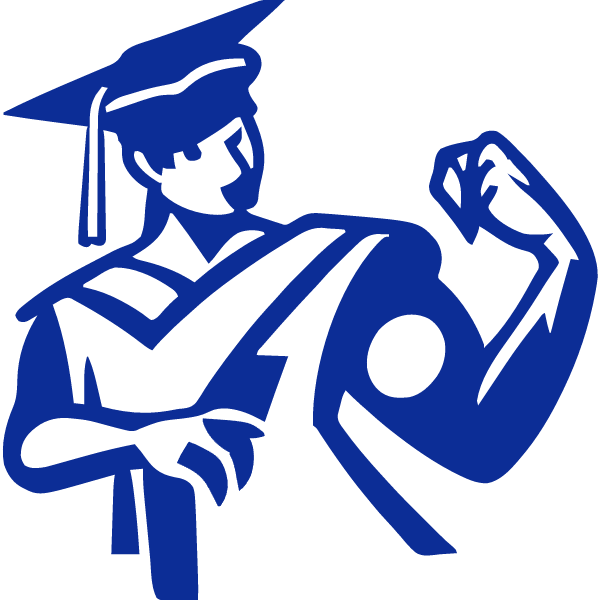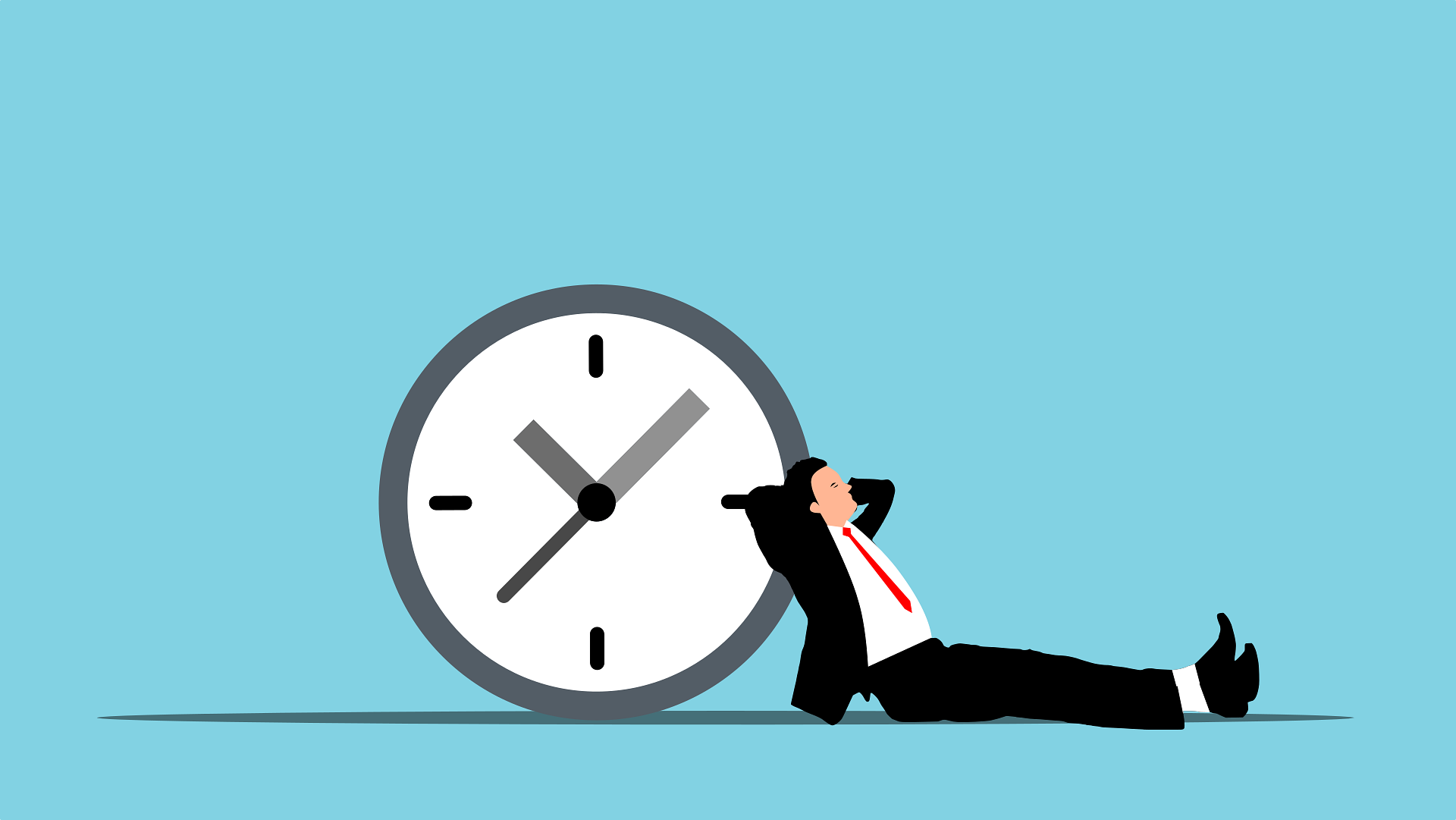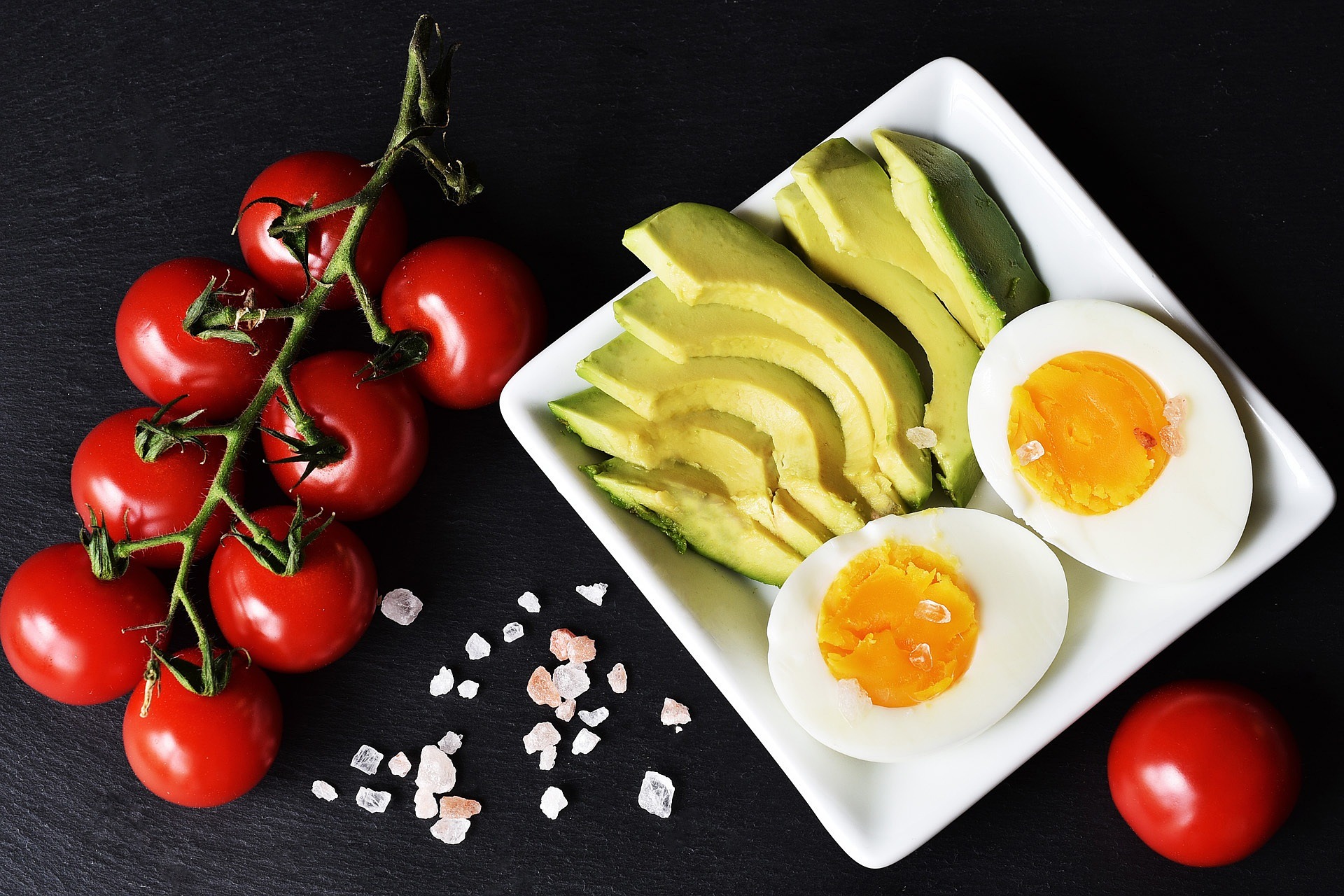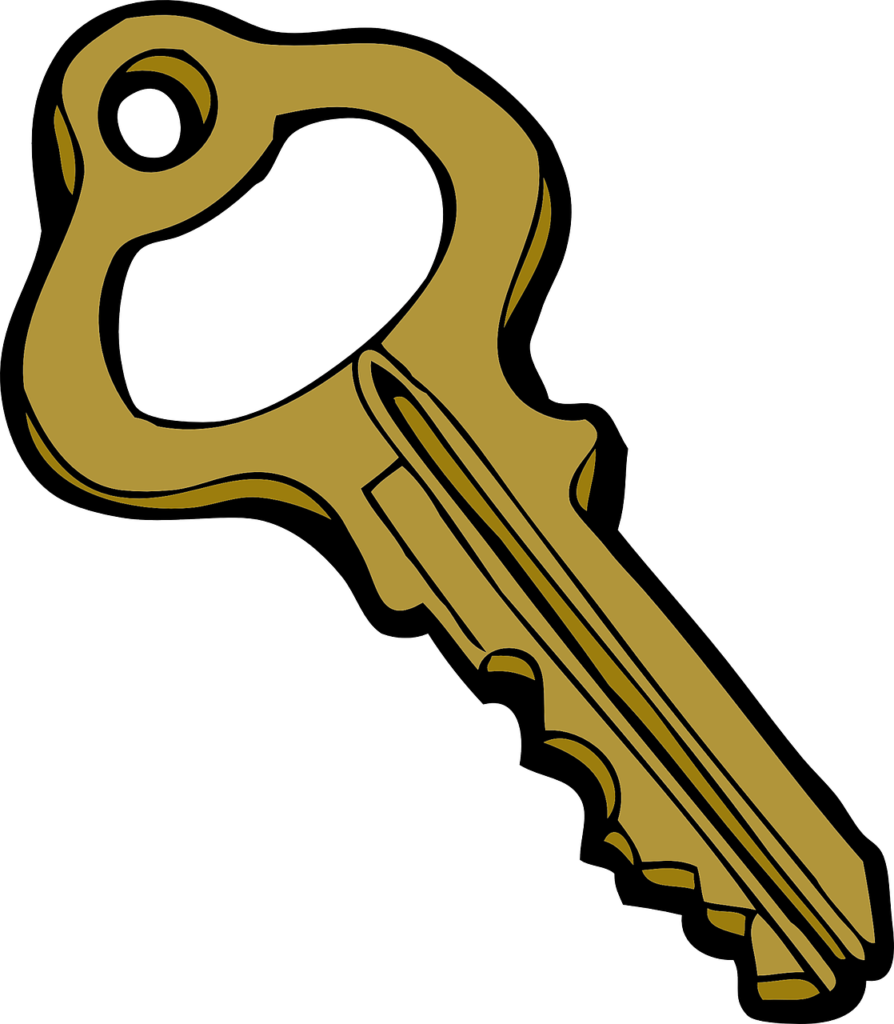3-Bullet Summary
You’ll benefit more from reading the article the whole way through. But, if you’re pressed for time, here’s a condensed version of The Best Exercise for Your Grades, Health and Performance:
- There are so many types of exercise to choose from that it can be daunting to even get started.
- Resistance training, which refers to resisting a weight by pushing it, pulling it or holding it in place under the force of gravity, is arguably the best exercise, however.
- There are 5 key reasons resistance training is the best exercise for students: it boosts your grades, gives you consistent energy levels, heightens your confidence, improves your posture and forges discipline.
A Sea of Noise
The time has come; you want to finally make a positive change to your health. No more late-night KFC binges or entire days sat around lazing on the couch. You’ve committed to sculpting your body and developing a physique that you’ll be proud of.
But where do you start?
Like most people in your position, you turn to Google. “What is the best exercise?” you ask it. Thousands of articles appear, pointing you in so many different directions. Swimming, running, yoga, circuit training, cycling, Pilates — a sea of noise that you’re struggling to navigate.
Which one should you pick?
Your brain darts to images of Instagram influencers on treadmills pounding out gruelling runs. So, you select running as your weapon of choice. “If they’re doing it, then it must be the right thing to do,” you convince yourself. Hastily, you head over to Adidas, buy a pair of running trainers, and commit to running every day until you reach your body composition goals.
The next day…
The trainers have arrived and you’re lacing up. You’re going on a run, and you’re going to keep going until it burns, because that’s what gets results, right?
30 minutes later…
Everything hurts. Your knees are sore and you’re sweating buckets. You want to stop, but the burn is there. You know that the Instagram influencers would be telling you to “push harder!” so you keep going.
30 minutes later…
You’re back home now. You ran for 45 whole minutes! Think about all the calories you’ve burned. But, you’re absolutely exhausted. There’s no way you’re moving for the rest of the day. What’s even worse, though, is that your ravenous. Hence, you’re now faced with a choice: demolish a tonne of carbs that you’re craving, or muster the willpower to eat what the influencers deem health food: chicken, rice and broccoli.
You’re a deer in headlights, stuck between healthy eating and calling for the sweet relief of Deliveroo.
“I’ve earned it,” you say to yourself, as you not only demolish the fridge, but also order a McDonalds.
Yet, you don’t know that you’re going to eat back double the calories you burned on the run — and you’re not running again tomorrow because you won’t be recovered.
All of a sudden, your fitness goals seem further away than they originally were.
Introduction
When I first got into exercise, cardio was my default. Every week, I’d smash out 5km and 10km runs. In fact, I got pretty good. I ran 11km in just under 45 minutes, which is above average.
But I saw no changes in the mirror.
My body composition didn’t improve from all the running I was doing, which was gutting, but I kept persisting because I’d forged a habit.
Years later, however, I discovered another exercise modality: resistance training. I’d heard about it before, but never thought I’d be the type of person to do it. I mean, I wasn’t a tank-top-wearing bodybuilder who grunted after every rep of a bench press, I was just a lanky, introverted student.
Yet, when I started doing it — just a few simple bodyweight exercises at home, like sit-ups and push-ups — I fell in love. The benefits it added to my life were absolutely crazy. I lost bodyfat, put on muscle, had much more energy throughout the day, obtained a much higher drive to study, and, best of all, got to eat more! Subsequently, resistance training soon became one of the non-negotiables in my weekly timetable, among sleeping, eating and studying.
In this article, we are going to explore the reasons why every student must resistance train. Regardless of whether you’re a male or female student, younger or more mature, resistance training, as I will show you, is critical for so many aspects of your life — not just building muscle.
Before we dig into the main benefits of resistance training, however, I think you’ll agree that there’s a pressing question that needs to be answered: what is resistance training?
The Best Exercise Explained: Resistance Training 101
At its core, resistance training is resisting a weight by pushing it, pulling it or holding it in place under the force of gravity to yield a muscular contraction (i.e., a ‘squeeze’). In essence, it’s weight training.
The weights used in resistance training can take many forms:
- Barbells
- Dumbbells
- Kettlebells
- Bodyweight
- Weight-training machines
- Resistance bands
- Sandbags
- A log from the woods
- Your dog (be careful, though)
Simply put, if it can be pushed, pulled or held in place under the force of gravity, then it can be used for resistance training.
Regardless of whichever form you choose, the gist of resistance training is simple:
Using proper exercise technique, contract your muscles.
That’s literally it.
Depending on our goals, though, we can make this more specific. For instance, if we want to utilise resistance training to build muscle and strength, which is the type of resistance training Strong Students utilise, how we resistance train evolves:
Using proper exercise technique, take the muscle you’re working through a full range of motion until the point of near to complete muscular failure.
In simple terms, if you want to reap the benefits of resistance training that we’re going to uncover today, this means that you need to fully stretch and contract the muscle you’re exercising until you can barely or literally not get another repetition (rep) or two.

The 5 Key Benefits of Resistance Training for Students
This may sound like you’re intentionally beating yourself up — and you are. However, don’t let this discourage you from resistance training. As long as you’re using proper exercise technique and safe movements, resistance training with this intensity will provide a host of physical and mental benefits that all stem from a concept called supercompensation.
See, when we resistance train intensely, we expose our muscles to high doses of mechanical tension. Mechanical tension simply refers to force produced by muscle tissues whilst working. The harder we push, the more mechanical tension our muscles experience.
If you think about it logically, the first few reps of any exercise are always the easiest. Say you’re performing a movement for a set of 8–12 reps. Reps 1–4 won’t be taxing and your muscles won’t have to produce much force. This means you won’t be experiencing much mechanical tension. As you approach reps 5–7, your muscles will have to work increasingly hard, produce more force, and, thus, endure more mechanical tension. Finally, once you’re in the 8–12 rep zone and approaching near or complete muscular failure, your muscles will be producing maximum force and experiencing lots of mechanical tension.
Once you’re done training, your brain processes the mechanical tension to which your muscles were exposed. For all your muscles know, that set of push-ups you took to complete failure could’ve been you pushing a tiger away with all your might and barely escaping. So, the body, being an intelligent machine that wants you to survive at all costs, diverts resources towards ‘hypertrophying’ your damaged muscles (i.e., making them ever so slightly bigger and stronger).
In essence, mechanical tension promotes a muscle growth signal1. If we rest and fuel our bodies with enough nutrients to respond to that signal, we experience muscle growth. This is the process of supercompensation and it is integral to resistance training like a Strong Student.
With exercise physiology class over, we’re left with one more question to answer: why the heck is resistance training like a Strong Student important?
Let’s waste no more time and get some answers! Here are the 5 key benefits of resistance training like a Strong Student.
1) Resistance Training Boosts Your Grades
Research has shown that resistance training literally improves brain function2. This means that your brain on resistance training is sharper and better at retaining information. In turn, because a resistance-trained brain is more healthy and efficient, it is no surprise that students who actively do it and are better at resistance training movements display higher levels of academic performance and achieve greater on standardised tests3.
It’s hard to believe, I know. But, once you try intense resistance training, you’ll notice these effects right away. You’ll just move about your day more smoothly and be a lot more ‘on the ball’ mentally. What your teachers say won’t just pass through one ear and out the other, and you’ll start retaining information much faster.
2) Resistance Training Provides You with Consistently High Energy Levels
There’s nothing worse for your productivity than having low energy levels. Without drive, you just want to scroll on your phone and take a nap.
Fortunately, there’s an antidote: resistance training.
In many ways, resistance training can boost your energy levels:
- The muscle mass it builds improves insulin sensitivity — When you eat, your body converts food to glucose (sugar). Once glucose is in your bloodstream, the pancreas produces a hormone called insulin, which signals cells throughout your body to absorb the sugar and use it for energy. Any energy that isn’t used is stored in the liver, and consuming too much causes massive insulin spikes and resultant sugar crashes. Because muscle is such an energy-demanding tissue4, people with more muscle suck up glucose like sponges. This means they don’t experience insulin-driven sugar crashes as much as people with low muscle mass. TL; DR: resistance training and building muscle will make it so you don’t have a big energy dip after you eat.
- It facilitates the production of mood-boosting endorphins — Resistance training causes your body to produce endorphins, which are chemicals that improve your mood and energy levels5.
- It contributes to bodyfat reduction — Although energy balance (calories in vs calories out) determines whether you lose or gain weight, having more muscle on your frame boosts your metabolism6. This means that more muscle = more energy required to maintain your bodyweight. Because high levels of bodyfat are bad for health, hormones and your ability to move, they are also bad for energy levels. Hence, resistance training, building more muscle and boosting your metabolism will make you feel more energised.
So, instead of taking the easy route to energy — caffeine and sugar — train hard and build some muscle.
3) Resistance Training Makes You More Confident
Chances are, you’re between the ages of 16 and 25. This means that you’re the most self-conscious you’ll ever be. There are people you want to please, and others you want to attract. Deep down, you crave status and recognition.
One of the absolute best ways to cure this self-consciousness is to build your dream body — to get leaner, stronger and healthier; turn heads that walk past.
Resistance training does just this.
It’s the best exercise modality for building muscle. It’s the best exercise modality for retaining muscle when in a caloric deficit (i.e., eating less than your body needs) and melting bodyfat. Studies have even shown that resistance training is a potent method for reducing both anxiety and depression7.
What’s more, you can even use resistance training to leverage the halo effect. The halo effect is a cognitive bias whereby people perceive you to be good at something based on you being good at another.
Literally, studies have shown that people who are in better shape earn more money. For example, one study into personal trainers found that those in the best shape disproportionately had their coaching services purchased by people wanting to get in shape, regardless of their qualifications and ability to actually coach8. It’s no surprise. looking lean and muscular takes a lot of time, effort and dedication. If you have both, you therefore instantly attract eyeballs and seem like a competent, worthy human being.
Suffice to say, if you want to build your confidence and earn respect, get resistance training.
4) Resistance Training Is a Powerful Tool for Improving Your Posture
I’m going to make an assumption: you’re sitting with a rounded back and forward head right now. Don’t feel guilty, because as a student, you’re inevitably going to spend a tonne of time sitting with suboptimal posture. This is by no means a bad thing. However, sitting with poor posture for ages, not stretching muscles that inevitably get tight, and not strengthening the muscles that reverse the posture created by prolonged sitting can lead to an array of physical health issues.
Although I’m not a physio, I know for a fact that so many students face many, if not all of these five issues in particular:
- Forward head posture (the most common)
- Exaggerated kyphosis (rounded upper back)
- Anterior pelvic tilt (Donald Duck butt)
- Plantar fasciitis (that horrible pain you get in your feet and calves when standing around sometimes)
- Over pronated feet (flat feet with no arch)
Want to know something amazing? Resistance training is a solution to all these problems!
See, lifting weights through a full range of motion, meaning you fully stretch and contract the muscle you’re working, does two things that majorly assist posture:
- It lengthens muscles that get tight
- It strengthens muscles that can get weak
Let’s zoom in on exaggerated kyphosis (hunchback) as an example of a condition that resistance training can fix. The cause of this condition is a tightening of the pectorals (chest muscles) and weakening of the muscles in the upper back and shoulders10, improves your breathing11 and even makes you seem more attractive12.
Want better posture? Resistance train all of your body safely and through a full range of motion.
5) Resistance Training Forges Discipline
To sculpt and shape your body takes time and dedication. Muscle building is a slow process that requires you to string together many months of progressive workouts. This essentially means that you need discipline to reap the rewards resistance training has to offer.
There will be days you don’t want to train and mornings when you’re sore. Further, there will be sessions when you have to push really hard to make progress and overcome significant mental hurdles. Simply put, resistance training isn’t for the feint-hearted.
However, the resilience you build on your journey will only have upsides. For instance, research has shown that those deemed as having the most ‘grit’ — the will to push through during hard times and consistently show up and work hard regardless of how they feel — get better grades13. In other words, students with the most discipline don’t go back on their word and end up making the greatest progress.
In this way, resistance training is like a dojo for your mindset. If you can religiously turn up, work hard and make progress despite how you feel on the day, nothing’s stopping you from forging other habits in your life that drive progress towards other goals, such as mustering the ability to study when you don’t want to and getting awesome grades as a result.
So, if you really want to build a bulletproof sense of dedication, resistance training will be a great ally.
Final Thoughts: The Best Exercise for Improving Your Grades, Health and Performance
Resistance training is the gift that keeps on giving. From as little as two sessions per week lasting barely an hour, you’ll boost your grades, build muscle, gain confidence, improve your posture and forge character.
Sadly, though, a lot of people don’t ever start resistance training because they don’t think it’s for them. Most men believe that they’re too weak and not meant to train with weights because it’s only for buff bodybuilders. Conversely, most women believe that resistance training is only for men, and if they do it they’ll be scapegoated.
Both perspectives are misguided. Resistance training is the most inclusive form of exercise on the planet. There are no entry requirements, and you can choose to train however you want to. Want to master bodyweight movements at home and stay away from commercial gyms? Do calisthenics. Want to join a gym with your friends and make awesome progress together? Find one in your local area and get training.
As I said earlier, when I started, I just did some basic stuff at home. I’d knock out some push ups, sit-ups and dips to failure — little did I know that this was going to transform so many different aspects of my life and send me on a mind and body transformation. I started to enter rooms a little bit prouder and taller, and I became much better at maintaining eye contact with people I encountered.
If I hadn’t started, then I would probably still be hiding in my introverted shell today. Perhaps I wouldn’t have conjured the drive to start helping other students to improve their grades and lives…
All in all, resistance training is critical for your growth in life. Humans are creatures that operate predominantly on sight. What we see really shapes how we act and feel. Therefore, if you start resistance training and become something that’s worthy of visual attention, you’ll unlock the halo effect and earn respect much more easily.
Start setting yourself up for success in all aspects of your life. Get resistance training!









